Tips, Tricks & Best Practices of Email Design for 2022
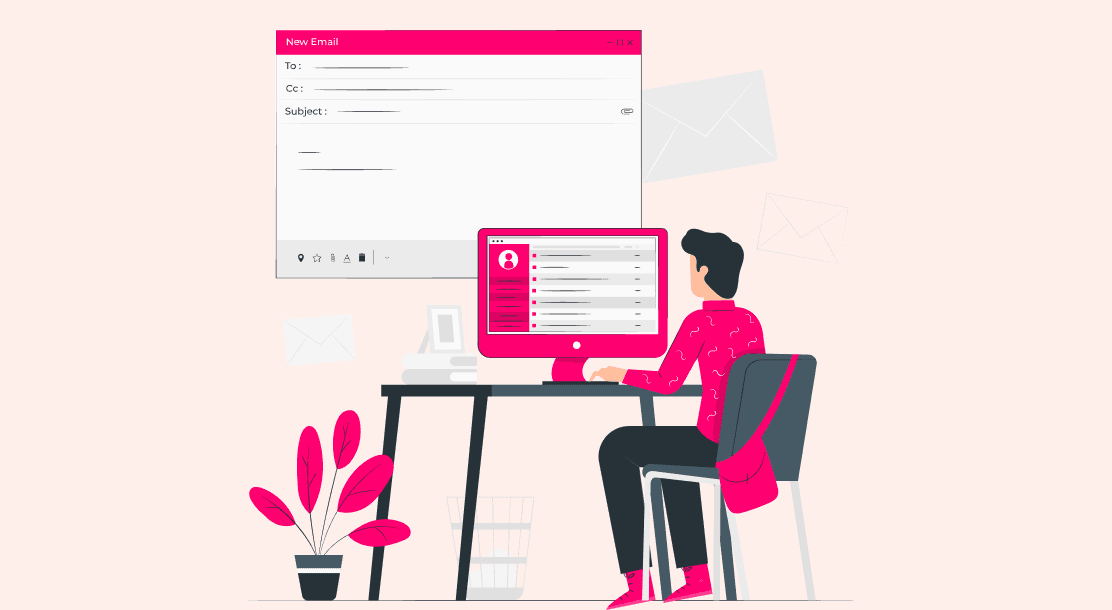
Table Of Contents
- Importance Of Email Design
- Email Design Best Practices
- Types Of Email Marketing Designs
- 7 Tips And Tricks for Email Design
- Integrating Email Design Into A Comprehensive Strategy
- Key Takeaways
- Conclusion
- FAQs
Most of us wake up to emails rather than an actual alarm on our phones. About 22% of the emails sent to the users are opened within the first hour of delivery- that means reaching out to both existing and prospective consumers is quicker when we take recourse to email marketing.
One more important feature of email marketing as an online marketing approach is that it offers the highest ROI of all online methods.
Studies have shown that in email marketing, when you spend $1, chances are you will receive around $36 in return. Such a high return on investment in email marketing is because the email user base is spread across four billion people globally.
With this, you can conclude that online marketing starts with email marketing and reaches an expected outcome only with its help.
If a business wishes to grow exponentially, it is mandatory to understand the fundamentals, tips and tricks, and best email marketing design practices. Before we delve into the best practices, tips, and tricks of email marketing, we must first understand why email design is essential.
Importance of Email Design
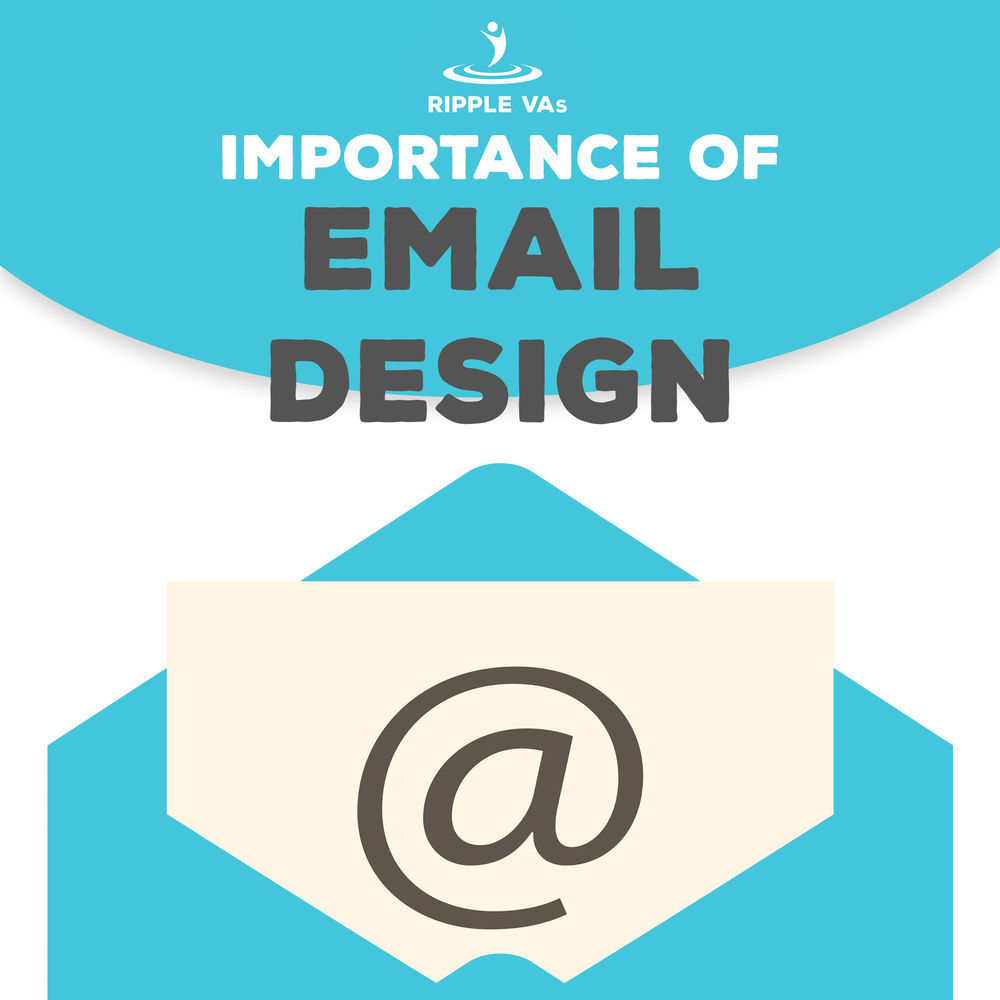
All of us live in times where enormous amounts of information surround us. Consumers are overwhelmed with the information coming their way and aren’t keen on shuffling through every piece of communication (regardless of how committed they are to the brand). People don’t have time for reading; instead, they browse through only the essential information.
Transforming sedentary browsing into active reading intelligently in email marketing. An email marketing design builds a logical path for the audience or the reader with the help of an aesthetically impacting structure and compels them to perform the desired action.
Following are a few other crucial reasons why an email design is essential.
- It has the potential to promote brand identification.
- It has the potential to engage the audience with the brand.
- It can connect with the intended audience.
- It has the potential to captivate the audience’s attention.
- It has the potential to create a stunning influence.
- It has the potential to make a lasting impact.
- It can sway users with commercial ploys.
- It has the power to promote products.
- Custom email design provides a solid platform for developing and implementing numerous marketing strategies and tactics.
Email Design Best Practices
Email design is an art. Even though many entrepreneurs do not realize it, optimizing an email commences long before the email template lands in the user’s inbox.
Someone new at email marketing can learn the trade by aligning the brand’s marketing goal with the email design. One has to answer the following questions before working on a compelling email marketing design:
- Who is the TG?
- What is the objective of the email template?
- What is the CTA?
Answering these questions will help us craft an email that will attract more users and compel them to do the desired action.
Following are some email marketing best practices to inculcate as you aim to improve the email design.
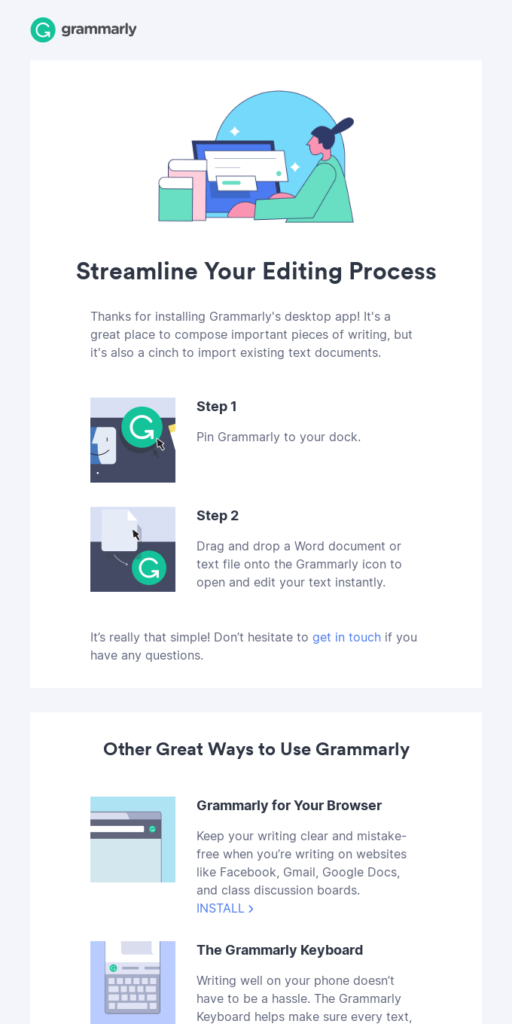
Maintain brand consistency
Email marketing design must align with the overall marketing strategy and shouldn’t be crafted bizarrely. It must be consistent with all the forms of brand communication, such as the website or social media channels, or ads. The best email design binds and strengthens the brand communication and does not ruin it.
It is okay to break the norm and be experimental in marketing; however, the design must align with the brand identity. Following are some key features of the email design that must be crafted carefully to strengthen brand communication.
- Color palette
A brand kit has a few primary colors that are used consistently throughout brand communication. We can use a few other secondary colors that complement the primary palette, but we can’t alter the primary colors in any business communication.
- Style
Craft emails consistent with other brand communication channels, such as the website or social media content.
- Font
An email design can have a maximum of two fonts that complement each other, not more than that. The font size can’t be too small; otherwise, the reader will lose interest in reading it.
- Brand Communication
The language and tone of the email must be per the brand identity. It must reflect the fundamental values and focus points of the brand.
Develop a mobile-centric design for marketing emails
More than 50% of users view emails on their phones, and this percentage will increase in the coming years. Companies willing to be relevant in 2022 and even after that will have to adapt to mobile-first email designs.
An email design that is brief is consumed well on a mobile device and has more probability of being read. Consumers who read emails on tiny screens don’t like to scroll through, so it is mandatory to use a legible font size.
The images should not be heavy to load and should have an “alt text”. Adding the alt text will also optimize the email better. It is advised to use a basic template with a single column for better viewing of emails on the mobile phone or tabs.
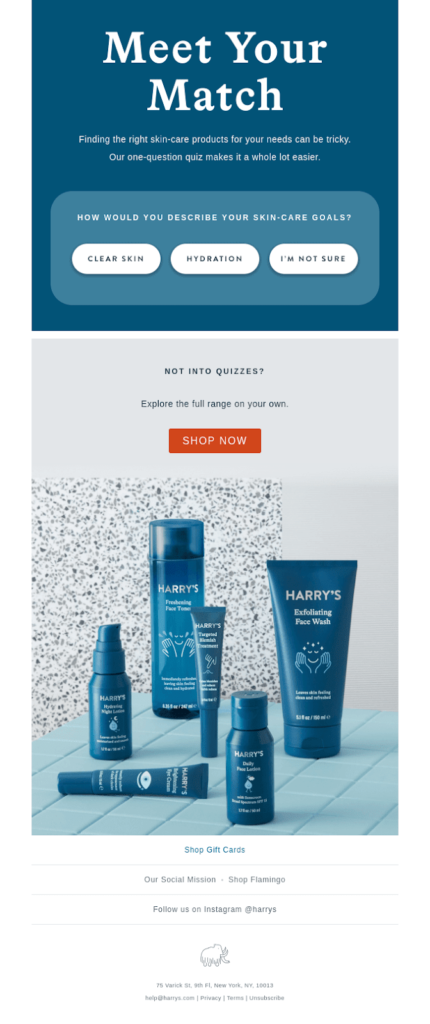
Employ an email template
An email template is a flow chart or a frame that directs the reader’s attention toward the ultimate objective. Customized email templates simplify and streamline the email design processes. We can alter the design elements as per the requirements keeping the basic structure intact.
An email template should have vibrant colors positioned with some white space around the design element so that the design block stands out. Ensure that there are not too many greys or light shades; otherwise, the email will look static and boring.
Leverage the power of personalization and dynamic content
Personalized emails have a 26% higher probability of being read than the usual bulk emails. It can be as simple as putting the reader’s name in the email or something complex like crafting emails specifically for a particular user base.
Dynamic content is a marketing technique that involves creating websites or emails that adapt to user choices and information. By employing factors and platforms that allow for this level of personalization, you can produce emails that are personalized to each consumer.
With marketing segmentation, deep personalization may extend beyond basic information. More specifically, there are other ways to automate this operation. Email automation tools allow you to create dynamic content based on customer data points like internet behavior and purchasing patterns.
Concentrate on a single essential call to action
Make it abundantly clear where the viewer will be directed after clicking on a link. Arrange the calls to action buttons in a hierarchical order if the email requires numerous actions.
Use colors that stand out or contrast in your design to highlight the most significant task. Your primary CTA should be at the top of your email, followed by further CTAs. Text-link CTAs or buttons with a rudimentary outline might be used as secondary CTAs.
Create a captivating subject line

The subject line often seems to be an afterthought, but it is the most crucial component of your email –it is your one chance to encourage someone to open it. Make it compelling enough to persuade the recipient to read the email but not so confusing that it gets ignored.
Clients are frequently urged to open an email with a promotion or a coupon code as a successful tool, but even then, writing the subject line is an art. Try to have different subject lines over time to see which ones resonate the best with your audience. A more provocative but less sales-oriented statement may be more successful at times.
Types of Email Marketing Designs
Depending on the objective of the email or the information provided in the email, you can consider the following types of email marketing designs:
Emails with greetings or welcome emails

Potential buyers or clients won’t be doing business with you on their first approach. You can expect less than one-fourth of the overall perspective leads to doing this in the first instance.
Furthermore, half of them will not be easily convinced to do business with you, even if they are qualified. This only shows that fostering a special bond with the prospective buyers is essential for taking them to the final purchase stage.
As long as facilitating a bond is concerned, welcome emails come in handy. These emails hold more probability of being read or having higher click-through rates.
Establishing a personal touch is essential; you can present a sales pitch related to a new product or service once you form that. An everlasting first impression shall represent the business expertise and experience, and it shall open doors to further possibilities in the future.
Email newsletters
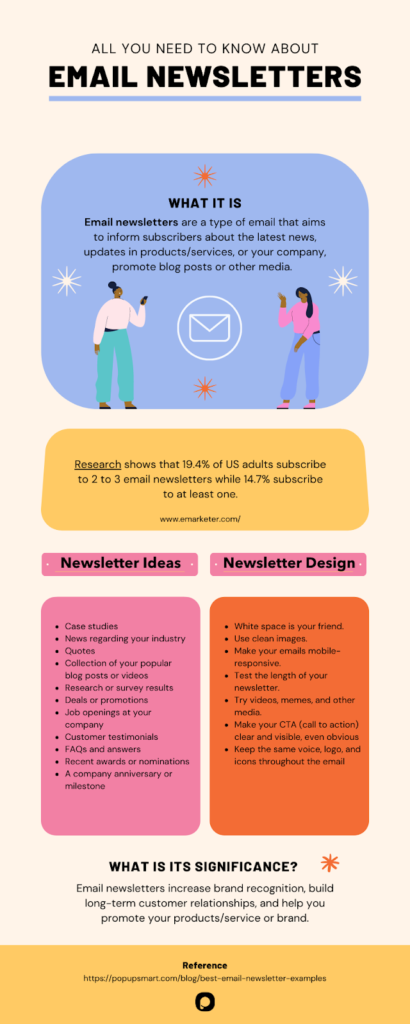
Most entrepreneurs leverage the power of email newsletters to stay foremost in their clients’ minds. For many powerful industrial corporations, email newsletters are considered the premium email marketing tool.
Email newsletters highlight every email marketing campaign because of their ability to inform more about the company, showcase individual and organizational achievements, and much more.
However, one must decide upon the ultimate aim of email newsletters even before crafting a suitable email template to be sent out. What are you trying to achieve with the email newsletter? Do you want to acquire a special bond with the reader and be their first choice in your sector? Or do you wish to encourage more and more readers or viewers to subscribe to your list?
Once this aim and the measures to track the progress are in place, we can start designing the mail newsletter accordingly.
Personalized emails
Personalized emails are often referred to as “dedicated emails” or “stand-alone emails,” and as the name suggests, they are curated in a targeted format towards individuals, not groups.
An example of a personalized email could be an email about an exclusive offer, an exclusive invitation to an event, or information about membership benefits on a launch.
These emails are excellent at establishing a foundation for an attractive call-to-action for the brand. Many marketers believe that personalized emails are no less than landing pages because of their ability to reach a particular call to action.

Transactional emails
As the name suggests, transactional emails are prompted when a user or buyer transacts with the company. These emails are communications from the company about the action taken or to be taken by the user.
An example of a transactional email can be an email sent to the user by the company upon subscribing to a plan or buying a product. Furthermore, an email that prompts the user to complete a transaction will also be considered a transaction email.
Every update sent by an online shopping platform regarding the confirmation of the order or tracking the shipment is a transaction email. These emails are essential for building trust and transparency among the buyers and help create a loyal client base.
Re-engagement emails
When a brand comes across metrics indicating a static number of subscribers for a long time, the marketers have to roll up their sleeves and think about reconnecting with the users. One of the most tried and tested methods of rekindling the bond with the customers or users is sending out re-engagement emails.
If it has been a while since you communicated with the user, you can send an email asking for feedback about their recent purchase. If the feedback emails start pouring in, the engagement game is spot on. Even when the readers unsubscribe, the overall engagement rate and brand awareness will improve.
Product update email
Product emails are complex; many readers don’t prefer reading them or getting them regularly, yet sending these emails is crucial for an organization.
Even when one has to send the product emails weekly or monthly to encourage the users to utilize the unique features or take them through new launches, the emails can’t seem too annoying or too technical. To make product emails less annoying and more interesting is by keeping them brief and concise.
Lead generating email
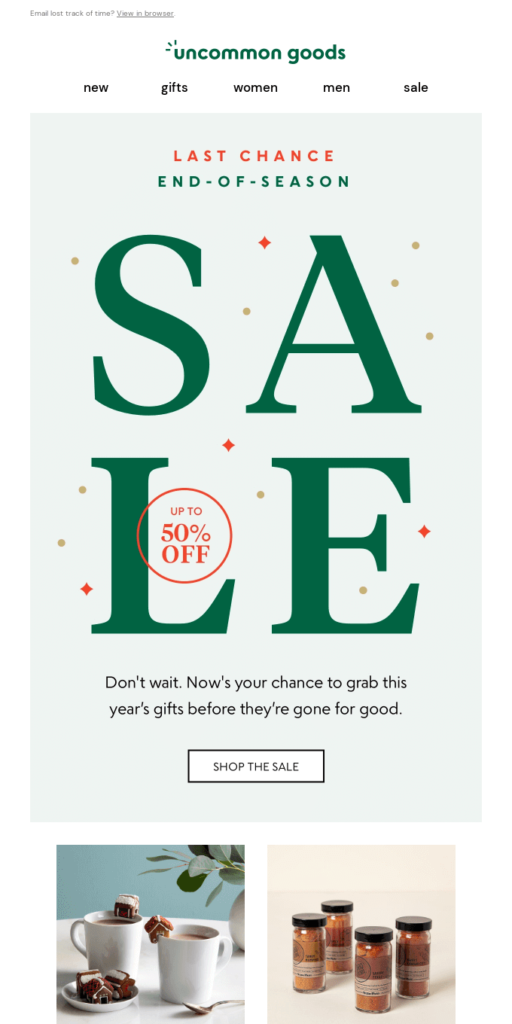
Lead generation campaigns have to have a character and a tone to attract more actionability from the users. Emails sent out for lead generation have a sequence where many emails are sent out to offer relevant information and are tailored as per the recipient’s behavior.
Lead nurturing emails encourage prospective users to follow a path carved by the marketers and make them sales-ready. Usually, the users who have acted upon the first line of marketing emails are targeted through the lead generation campaign by sending out another email that presents a supportive offer.
The rationale behind shortlisting the users is that users who acted upon the emails sent out to them are likely to go for the supportive or supplementary offers in the future. It is easier to shortlist and follow up on the suitable users for the tailored offers or emails.
However, you must specify why the recipients are getting the emails in the first line of the email body itself. It can start by saying, “We are glad that you visited our site and explored the products we offer. We thought that you might find the following suggestions helpful in buying products on our site.”
Once this pretext is established and your emails are no strangers to the readers, you can structure the rest of the content on the lines of the usual marketing email.
Furthermore, when sending out lead nurturing emails, the structure or segmentation, the tone of the communication, etc., are essential factors to consider for making the emails appealing to the readers.
7 Tips & Tricks for Email Design
Following are seven essential tips and tricks to make your email marketing design more effective:
Using the correct header and metadata
Whenever we open an email, the first thing that catches our eye is the header or email’s metadata. Usually, an automated email marketing system pre-fills email addresses in the sender sections. Still, you can edit those spaces and put customized email addresses in front of the “from” or “reply-to” tabs.
- Customized “From” tab
Use an official email address for the “From” and “Reply-To” sections to boost deliverability and users’ probability of getting your emails. When your recipients see who is sending them emails, they are less likely to unsubscribe.
- Customized “Reply-To” tab
Often, an email sent by a corporation is presented as being sent from the corporation’s CEO; however, they are not in a position to revert to the trail-mail in the future.
Hence, it is advised that you add a proper email address of the concerned person in the reply-to field, and the same name must be there in the footer with an authentic signature.
- An appealing subject line
A subject line is the first impression of the email campaign and the brand; hence, it can never be dull, spammy, or wordy. A crisp and to-the-point subject line appeals to the reader more than a detailed, long subject line.
Crisp preheader text
A preheader, often known as an introduction, is the text that frequently appears alongside. A preheader is a preface to the email body and its content. The preheader text is the content that can be seen beside the subject line in the reader’s mailbox.
Although all email providers do not automatically offer preheader text visibility, it is still an excellent strategy to add preheader text to every email. This is a good tool to convey the objective of the email and what the reader can expect from opening the mail.
We can summarize the key points of the email by presenting some crucial facts in the preheader. For example, when the email is about a discount offered to the reader, we must briefly mention it under the preheader.
Many of us think it is not obligatory to add a preheader text in the email, but it’s as essential as the email’s subject line. Preheaders enable the readers to foresee what an email has to offer, fostering a sense of urgency among readers.
Effective images
When it comes to an effective email campaign, images are an essential tool. If used wisely, images have the power to direct prospective customers towards the desired action. We have to make sure that the images only enhance the email design and do not make the design difficult to understand and load.

- High-res images
Only crisp and sharp images with high resolution should be added to the design. The pictures added in an email can range from 1 MB to 5 MB. Large images will take longer to load, and such emails will probably end up in the spam folder. Too tiny or too large JPEG or PNG files will ruin the design and push the reader further away from the brand.
- Emotional stimulus
Before organizing the images as per the email structure, analyze and sort pictures with a high probability of stimulating some form of emotion in the reader’s mind. Images that have feelings in them or some form of conversation via the subject’s body language appeal to the reader more than static images of products or landscapes.
Color palette and logo
Email marketing design is an aesthetic and creative part of any business marketing strategy. It represents the brand identity, value, and preposition in front of the reader.
Consistency in the brand’s identity (on every platform) can only be maintained when there are set primary and secondary brand colors and a unique logo decided by the marketing team. To give the reader a powerful essence of the brand, chalk out a few fundamental and consistent brand practices.
- Consistent color palette
As stated earlier, using a single set of primary and secondary brand colors consistently allows us to represent the brand identity effectively.
Rather than starting afresh every time you send an email and allocating a different color scheme to every email campaign, crafting a brand color palette is easier and more effective. Choose colors based on the brand logo.
- A distinctive logo
Imagine that an email header space is like an outdoor publicity tool; now imagine it lacks any mention of the company name or logo. Will it prompt the viewer to take the prescribed action? Certainly not. However strong the marketing strategy is, without a distinctive and unique brand logo, it won’t work.
A brand logo is a crucial element of the brand identity. Hence, it must be visible in every email campaign, and it must be of an appropriate size. A too-large logo file will occupy the screen, and a too-small logo will be unsharp. The logo file must be just the right size to be quickly identifiable.
Email body
After tempting the reader to open the email with an appealing subject line, the responsibility of persuading the reader to perform the desired action is with the email body.
You can use the readymade templates for email communication or customize a new format for every type of email. Creating a custom-made template may not always be the option; in that case, restructure a set template as per your objective.
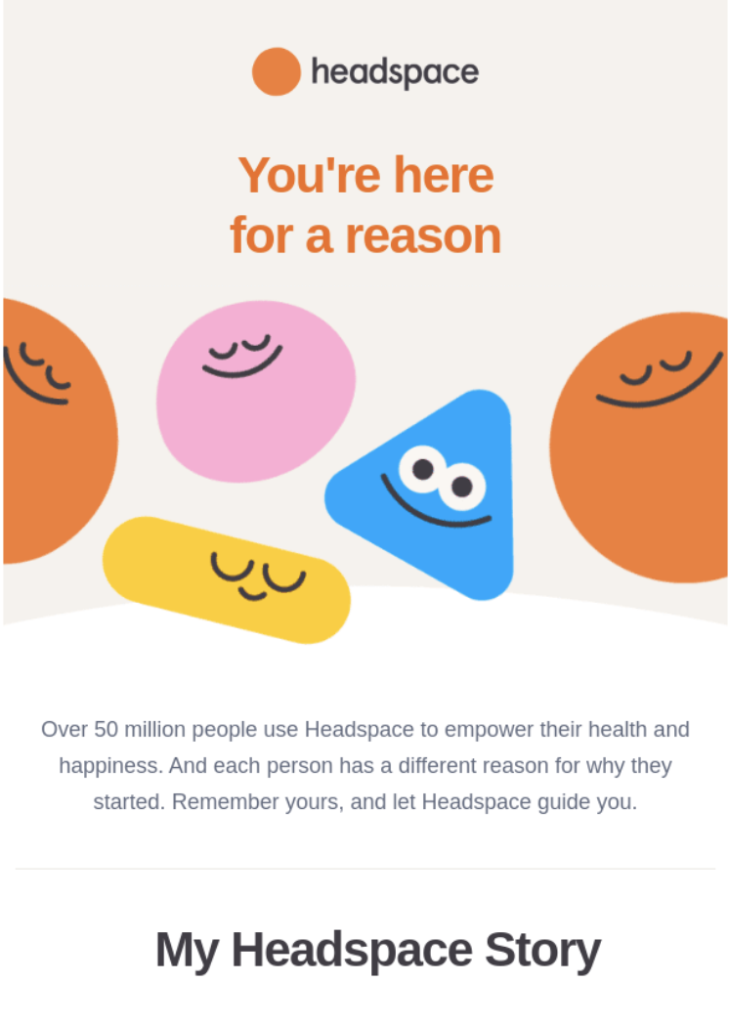
- Less is more
In every design form, including an email design, the thumb rule is “less is more.” Create an email that acts as a digest of all the key points you wish to convey, with an opportunity to “learn more” for users.
You want to communicate and cover everything in a single email, but the reader will not be in a position to go through such a long email. Allow the visuals in the email to do the talking instead of the longer passages. Try inserting icons or some effective visual inserts to simplify the communication.
- Crisp communication
We all know that conveying something in a few lines is far more complex than writing an extended form essay about a particular subject. However, you must master conveying everything in a gist in the email body. Once you know how to streamline the emails in a gist, the emails will be crisp, and the readers will find them easier to understand.
Buttons with CTAs
The CTA buttons or tabs lead users or readers toward the next step in the communication with instructions like “purchase now,” “read more,” “subscribe now,” or “learn more.”
Whatever language you choose or instruction you insert on those buttons, present the CTA buttons in a way to make them stand out. The call-to-action should not be ambiguous and be in simple language so that the readers notice it quickly.
These tabs must indicate what happens after a user clicks them. You can have more than one CTA within the same message, provided you present them in the order of importance without overpowering each other. Some follow the practice of putting the most important CTA at the top of the email and inserting other CTAs in the remaining body of the text.
Footer
The footer of an email provides details about the sender or the source to the recipient. To build the email and brand’s authenticity, the footer must include some crucial details about the sender, e.g., the name, designation, contact details, location, etc. In addition to these details of the sender, a footer may include details such as:
- Name and physical address of your company
- An unsubscribe button or link
- A mode for subscribers to fill in their information
- Privacy policy or confidentiality clause
- Service provider’s information
Integrating Email Design into a Comprehensive Strategy
When you are unsure about the best email design practices for your business, prepare a list of objectives and a list of campaigns that worked in the past. This can help you achieve your goals easily. Many marketers and designers keep experimenting with various styles before coming up with the best suitable one for their business.
You can have two approaches to email campaigns as A and B, to test the workability of email campaigns. The campaign that receives the most reverts or more conversion ratio will be your go-to email campaign even in the future.
You can send option A email design to half of the users and option B to the other half. The email marketing campaign will provide you with an accurate analytical report and inform you which email campaign option worked better than the other.
After conquering the skill of crafting an email marketing design, you can include the campaigns in your more comprehensive internet marketing strategies.
Key Takeaways
The following pointers will be the best guide if we have to enlist email design best practices.
- Readers will open emails that have clear and compelling subject lines.
- Emails with compelling and high-resolution images tend to connect with the audience more.
- Personalized or dedicated emails have a higher chance of being read till the end.
- The inclusion of an unsubscribe option in the footer is a sign of goodwill.
- The brand identity must be maintained in images, text, and colors so that the reader relates to the brand more.
{Insert general services banner here}
Conclusion
An email is a crucial tool for communicating with a large group of people, and it’s critical to get the design just right. Emails must have an engaging blend of language, design, and must-click CTAs.
FAQs
The best email design should be able to direct the audience towards the ultimate aim of the email campaign and must indicate what’s in the email for them. The reader must be able to scroll through the email with the help of a path laid by strategic email design.
An email design can be enhanced or transformed by using a concise title and subject line, compelling images, and a logical structure to direct the reader towards the desired outcome or call to action.
Some of the best email practices include keeping a clear pre-header for the email, including mobile-first templates in the body of the email, personalizing the emails, and many more.
An email marketing design can be visually appealing if you add images, infographics, statistics, graphs, and animations.
An email is similar to a business letter. It should be treated with utmost care and precision. Make sure that there are no grammatical errors or typos. An ideal format of the email content is keeping it brief and concise (the length of the content doesn’t necessarily signify its quality).
Latest Blogs
Explore how Google’s 2025 AI search updates triggered ranking chaos. Learn actionable strategies to adapt your SEO for AI Overviews, zero-click searches, and SERP volatility. Stay ahead now.
Learn how to rank on AI search engines like ChatGPT, Perplexity, and Gemini by optimizing your content for authority, structure, and relevance. Stay ahead in AI-driven search with this strategic guide.
Explore the best healthcare SEO services for your medical practice. Improve online visibility and effectively reach more patients in need of your services.
Get your hands on the latest news!
Similar Posts

Design
7 mins read
15 Best Firms Offering Design Services in India

Design
5 mins read
All You Need to Know About Data-Driven Design

Design
6 mins read